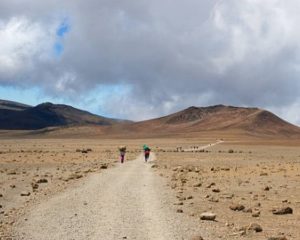YIA projects
PFAS-QUEST: Embedding PFAS Semi-Quantitative Non-Targeted Strategies into Urban Water Management for Environmental Protection in Luxembourg
PFAS-QUEST will enable the development of standardized semi-quantitative non-targeted screening (NTS) workflows to identify and quantify per-/poly-fluoroalkyl substances (PFAS) in effluents from wastewater treatment plants (WWTP), and to systematically assess the performance of a new advanced treatment scheme (ATS) in removing PFAS. In such ATS, ozonation will be followed by constructed wetlands (CWs) in place of traditional granular activated carbon filtration, aiming at preventing PFAS emission from small-medium size WWTPs installed in rural areas of Luxembourg.
The integration of nature-based CWs in ATS for wastewater remediation represents a sustainable option relying on non-use of energy for operation, low carbon footprint, in situ recycling of wastes to provide supporting medium and ease of integration in environment. The action will release procedures and recommendations on how to implement NTS workflows for O3/CWs system assessment, benefiting public and private stakeholders.

Start date: 01 July 2024
Duration in months: 36
Principal Investigator: Dr. Federica PIRAS
Link to the project page: PFAS-QUEST
OBI-PIA: Ontology-Based method for Interdisciplinary Data Protection Impact Assessment
AI will integrate all sectors, including small and medium enterprises (SMEs), promising automation and efficiency. Yet, AI models pose risks to privacy and security, challenging us to define appropriate requirements, as our preliminary findings in the NCER-funded AI LegaLake project suggest. These findings highlight the importance of data protection impact assessments (DPIA) in SMEs. DPIAs are mandatory from the GDPR that help guide the development and design of privacy-preserving systems. Nevertheless, SMEs may not have the required knowledge and capabilities to produce them.
In this context, the proposed Ontology-Based method for Interdisciplinary Data Protection Impact Assessment (OBI-PIA) aims to offer a lightweight and usable approach for interdisciplinary DPIAs assessment. It leverages ontological domain conceptualization and model-based discussions to bridge computer science, legal studies, and policy on data protection.

Start date: 15 July 2024
Duration in months: 36
Principal Investigator: Dr. Claudia NEGRI RIBALTA
Link to the project page: OBI-PIA
TRANSOPTIC: High throughput all-optical single cell transcriptomics on a chip
Single-cell transcriptomics is at the foundation of modern biological and medical research targeting functionalities of biological cells at the genetic level. The ability to snapshot the execution of genetic code allows to tailor medication, understand cell interactions as well as disease pathways. The state of the art relies on single-cell mRNA sequencing. The bottleneck in this technology is the high cost, low throughput and the need for lysing, i.e. impossibility to perform studies on live cells.
This project aims at rapid all-optical readout of cellular states at large scale based on high-sensitivity stimulated Raman scattering by integrating two emerging chip-scale technologies. This approach will enable high detection rates, low cost and robustness allowing even kinetic studies on live cells. This paradigm shift in cellular analysis not only overcomes current technological bottlenecks but also opens new horizons for dynamic, in-depth biological and neurological exploration.

Start date: 01 August 2024
Duration in months: 36
Principal Investigator: Dr. Markus LUDWIG
Link to the project page: TRANSOPTIC
HYPUSH: Spin disorder in iron oxide nanoparticles: A new paradigm to elucidate for pushing the limits of magnetic hyperthermia
In recent years, the field of nanomagnetism has benefited from magnetic defects to expand the limits of knowledge and applications. However, the full potential of spin disorder is yet to be released. In an interdisciplinary project merging nanomagnetism, computational science, neutron scattering and biomedicine, HYPUSH proposes to benefit from magnetic inhomogeneities for pushing the therapeutic efficiency of magnetic hyperthermia. Based on the combination of neutron data and micromagnetic simulations, the correlation between the spin arrangement and the macroscopic heat release will be elucidated, allowing to identify the optimal nanoparticle designs for upgraded magnetic hyperthermia. The scientific outcomes, together with the training on leadership and management, will enable me to lean in my next step career, leading my own research projects and expanding the developed methodology to pioneer unexplored research avenues.

Start date: 01 August 2024
Duration in months: 36
Principal Investigator: Dr. Elizabeth MARTIN JEFREMOVAS
Link to the project page: HYPUSH
LICER: Liquid-Crystal Elastomer Robotics
LiCER proposes to design, develop and demonstrate an instrumented actuator from liquid crystal elastomers (LCEs), with the aim of building a soft endoscope robot. This requires the intersection of three research areas represented by the applicant (AI) and the two host groups (JL, HV): (1) LCE engineering and programming of actuation (JL), (2) mechanics of soft materials for dynamic actuation (AI) and (3) the development of robotic control systems (HV). Direct ink writing (DIW) will be used to make the LCEs, allowing us to program the ground state shape and the alignment of the polymer chains, thereby defining the actuated shape. An innovative component is that we will use the same technique to print also other materials, providing thermal or light energy to the LCEs for triggering actuation and deformation sensors to monitor actuation. In contrast to standard LCE research, our ambition is to make a component that is of real value in robotics, as ensured by the competence in the team.

Start date: 01 August 2024
Duration in months: 36
Principal Investigator: Dr. Alejandro IBARRA
Link to the project page: LICER
AMiPD: Astrocyte Metabolism in Parkinson’s Disease
Growing evidence points to the alteration of astrocyte function and mitochondrial dysfunction as significant contributors to Parkinson’s disease (PD) and α-synuclein (α-syn) pathology. The Astrocyte Metabolism in Parkinson’s Disease (AMiPD) project aims to elucidate how α-syn pathology influences astrocytic metabolism and its subsequent effects on neurodegeneration in PD. The project aims to use a multi-omics data approach to identify metabolic alterations in α-syn mutant astrocytes. The primary objective is to develop a multiscale computational model capable of simulating astrocytic metabolism, integrating spatial and morphological features to predict metabolic changes accurately. Experimental validation will include metabolomic profiling and mitochondrial characterization in astrocytes derived from iPSCs of α-syn mutation carriers, as well as post-mortem brain tissues. This interdisciplinary approach bridges wet lab and computational biology, offering insights into PD pathogenesis and identifying potential therapeutic targets.

Start date: 01 January 2025
Duration in months: 36
Principal Investigator: Dr. Ilaria GOGLIA
Link to the project page: AMiPD
PROTEX: PROtect against EXploitation: exploitative offences versus legitimate work in a digitalised labour market
he project “PROTect against EXploitation: exploitative offences versus legitimate work in a digitalised labour market” will conceptualise an updated legal definition of “exploitation” in rapidly changing work sectors. “Exploitation” divides between criminalised and legitimate forms of work, particularly in the offence of human trafficking. Yet, no concise and clear definition of this crucial concept exists. Many victims are still denied State protection as its interpretation mainly depends on law enforcement authorities. These challenges are becoming even more relevant given the evolving work market, especially due to its digitalisation. While labour law is meant to protect employees from exploitation, its scope struggles to extend to new, often digitalised, work situations. Thus, the project aims for an operationalised legal definition of exploitation to guide the identification of victims of exploitation as well as the sustainable protection of all workers’ rights.

Start date: 01 February 2025
Duration in months: 36
Principal Investigator: Dr. Salomé LANNIER
Link to the project page: PROTEX
EPIMAPS: Mapping Nineteenth-century National and Transnational Literary Networks through Epigraphs
EPIMAPS explores national and transnational literary networks through the study of epigraphs (quotations at the beginning of a book or chapter). First, this project will be concerned with a mapping of epigraph theory within intertextuality and paratextuality studies. Second, a distant reading of a large multilingual corpus through network visualization techniques shall try to reveal the complex patterns of literary circulation via epigraphs in nineteenth-century Europe. Finally, this computational distant reading perspective will be complemented by a series of close readings analysing the functions of epigraphs in different literary contexts. These readings of nineteenth-century epigraphs may inform and nuance contributions towards a new theory of intertextuality. In so doing, the uncanny ability of epigraphs to adopt new meanings and functions in new contexts while retaining (for the most part) their literality shall be reflected in the structure of this project: In the age of digital humanities, nineteenth-century epigraphs may shed new light onto literary theory and history.

Start date: 01 February 2025
Duration in months: 36
Principal Investigator: Dr. Tomas ESPINO BARRERA
Link to the project page: EPIMAPS
KDReCell: Leveraging Knowledge-Enhanced Deep Learning Models for Cell Reprogramming
Zhiqiang Zhong’s YIA project “KDReCell” aims to revolutionize cell reprogramming through foundation Artificial Intelligence models. By combining deep learning with biological knowledge networks, the project seeks to understand and control cell differentiation processes. This interdisciplinary work bridges computer science and cancer biology with direct applications in regenerative medicine, establishing new paradigms for using AI to accelerate biological discovery.

Start date: 01 March 2025
Duration in months: 36
Principal Investigator: Dr. Zhiqiang ZHONG
Link to the project page: KDReCell
CliMig: Climate Migration
Gaurav’s project will combine high-resolution climate data with georeferenced internal migration patterns to address a key gap in demographic research: tracking migrants across space and time. He aims to understand how climate variability influences migration choices, why individuals make these decisions, and where they lead. This research makes a timely contribution, as climate-induced migration is on the rise, yet the dynamics of this movement are still poorly understood.

